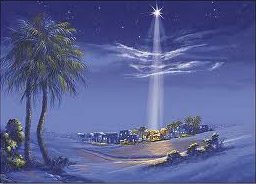THE LIFE OF JESUS CHRIST

Image Source: Image Source: thumbs.dreamstime.com
THE LIFE OF JESUS CHRIST.
Dear fellow parishioners and steemians,
Today we are starting a new series on THE LIFE OF JESUS CHRIST. I do hope and pray this study will bring hope and blessings to you. Amen. Bon Voyage!
I. THE PERSON OF CHRIST.
In our study of Christ’s life here on earth, where shall we start? Where do the gospels begin? If we accept Mark as the earliest gospel to be written, we see that Matthew, Luke and John extend their view of Christ farther back into the period of history. While Mark simply looks back to the beginning of his ministry, (Mk.1:1)
Matthew was anxious to see that the Jews recognize their king. So, he looked back to his Hebrew Progenitor, Abraham (Math. 1:1).
Luke whose view of Christ was not confined to the provincial sphere of the Jews, looked farther still to his human forebear (ancestor) Adam. Luke. 3:38.
John with deep spiritual contemplation, delved deeply into the eternal past, when Christ as the creative word shared the same glory of the father (John 1:1-3).
Christ, the eternal word, became a man and lived upon the earth among men.
II. HIS DUAL NATURE.
He was divine and he was human, the son of God and the son of man. This dual nature was perfect, forming a perfect person, free from sin and guile, and full of grace and truth. To redeem man, God in Christ became man; to reveal God the man Jesus was God. The human and divine qualities of Christ were set side by side in the gospels.
Jesus as a man slept in the boat a storm arose; as God he awake and made the storm subside (Matt. 8:24-26). As man, Jesus was hungry and approached the fig tree; as God he cursed the barren tree to die (Mk. 11:12-14, 20-21).
Jesus the man was weary, thirsty, and hungry at the well in Sumerian; as God he promised the Samaritan woman eternal water (J n. 4:6-8, 14).
As man, Jesus wept at the tomb of Lazarus, as God he raised his friend from the dead. (Jon. 11:35-44). As man Jesus suffered and died for us to accomplished eternal life for mankind (Luke. 23:33-46).
III. HIS INTRODUCTION.
Matthew introduces him as “the son David” Matt. 1:1 Mark introduce him as “the son of God” Mk. 1:1, Luke combines the divine and human aspects of Christ by calling him “ the son of the Highest” and in the same breath referring “his father David” lk. 1:32. John sums up the glorious mystery of incarnation with the profound statement that “the word was made flesh” and dwelt among us, (and we beheld his glory, the glory as of the only begotten of the father) full of grace and truth” John. 1:14.
 Image Source: readingacts.files.wordpress.com
Image Source: readingacts.files.wordpress.com
IV. THE BIRTH OF CHRIST.
The birth of Jesus was a supper natural event, attended by a sequence of divine manifestations. Matthew and Luke bear detailed record of all that happened.
First was miraculous birth of John the Baptism to Zachariah, a Priest of God, and Elizabeth, his wife Luke. 1:5-25; 57-80. John became the fore runner, whose ministry prepared the way for Christ.
A second supper natural manifestation was the divine announcement to the Virgin Mary that she was to bear a child Luke. 1:26-38. the third was the divine announcement to Joseph, her husband Matt. 1:18-23.
God chose the earthly parents of Jesus with great care. Mary was a devout young lady pledged in marriage to Joseph, but not yet actually married to him. She was so exemplary in all spiritual and womanly virtues that she found favour with God and was blessed among women.
God also chose Joseph as carefully as he chose Mary, for if Mary had married a foolish husband, it would have been very difficult for her to fulfill this divine purpose. Although Joseph was not the earthly father of Jesus, God entrusted to him the responsibilities of a father and dealt directly with him concerning the welfare of the child Mat. 1:21-23.
God appeared to Joseph at least four times concerning the birth and preservation of the son of God.
a. Concerning the nature of Mary’s conception Matt. 1:20.
b. Warning him to flee into Egypt, so that Jesus would escape the evil plot of Herod. 2:13.
c. Instructing him when to return to Israel 2:19.
d. Directing him to Nazareth Galilee 2:22-23.
The genealogy of Jesus was traced by Matthew and Luke in different dimensions. While differences are not explained in the scripture it is widely believed that Matthew traced the line of Joseph while Luke traced the Line of Mary. According to ancient custom descendants of David will be the earthly Guardians of God’s only begotten son.
Roman taxation was the circumstance that took Joseph and Mary from Nazareth ton Bethlehem (Luke. 2:1-5).
Caesar Augustus, emperor of Rome decreed that a tax be collected from every inhabitant of the provinces where Rome ruled.
All persons were required to register for the taxation in their family cities. Therefore, being of the family of David, Joseph and Mary had to travel to Bethlehem, the city of David.
Through this, God used the decree of a pagan emperor to achieve his purpose; for it was foretold in the scriptures that the messiah would be born in Bethlehem Micah.5:2.
Jesus was born into a cold inhospitable world that does not know him (Jn.1:10-11) on the night Jesus was born to Mary there was no room for them in the in ( Lk. 1:7) the only place Mary and Joseph could find shelter was in stable. “Jesus” is merely the Greek form of the Hebrew name
“Joshua” which means “Deliverer” “Saviour”. The name does not indicate his divine nature. It is a common name in Jewish community, for example, Joshua was called Jesus in the book of Acts. 7:45; 13:6,
it is only after Jesus began His ministry was the title Christ, given to him. This is the Greek equivalent of the Hebrew, “The anointed one” and refers to the divine nature of Jesus.
Matt. 16:16;
John. 4:25, 29;
1 John. 5:1.


Posted using Partiko Android
Thanks for this wonderful message
FF